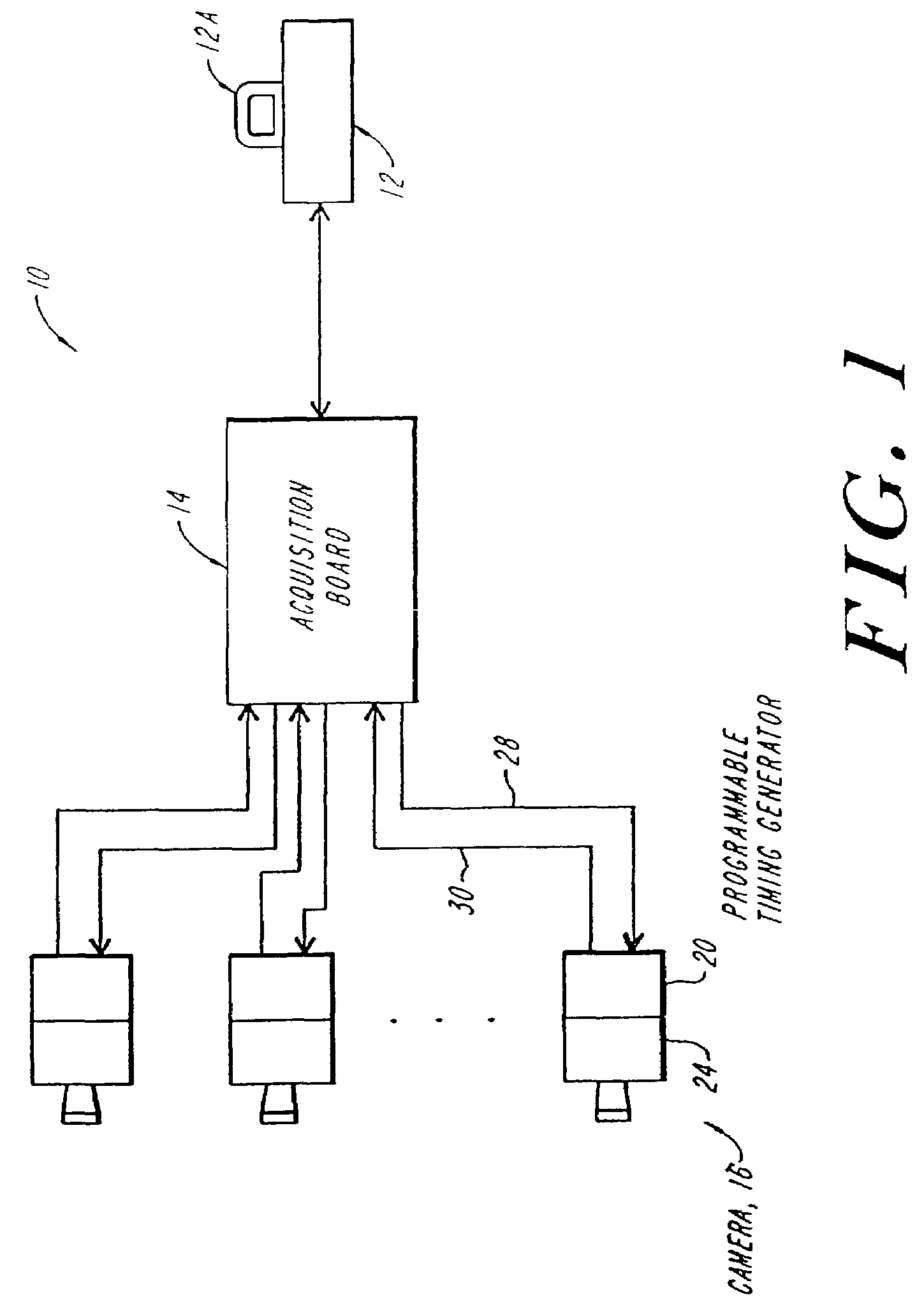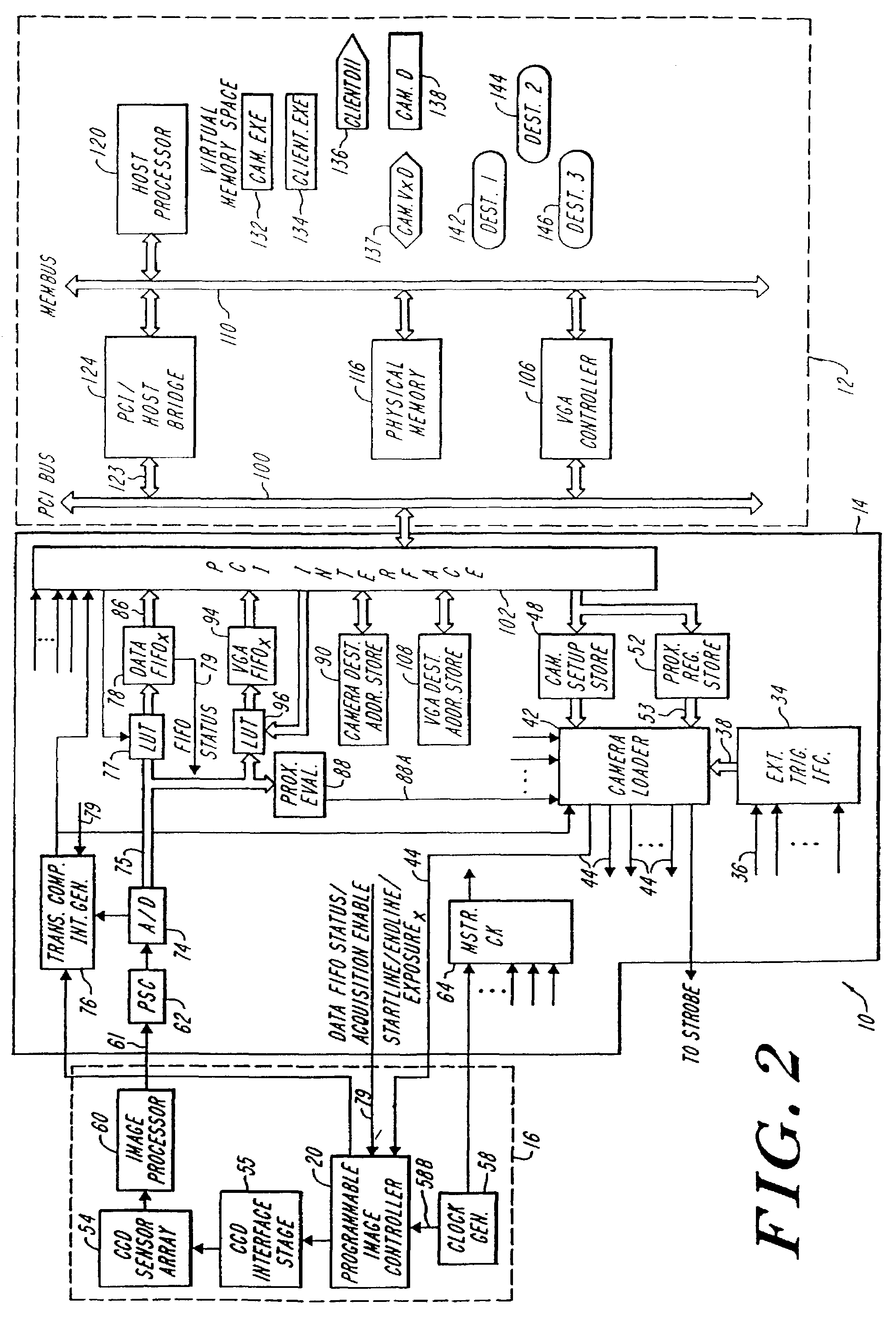Image acquisition system
a technology of image acquisition and image, applied in the field of image acquisition systems, can solve the problems of inability to detect errors, the design goals of existing imaging technology typically used in machine vision systems, and inability to meet the requirements of modern machine vision systems, etc., to achieve the effect of reducing data management tasks, reducing latency, and increasing image fidelity
- Summary
- Abstract
- Description
- Claims
- Application Information
AI Technical Summary
Benefits of technology
Problems solved by technology
Method used
Image
Examples
Embodiment Construction
[0048]FIG. 1 is a schematic illustration of the image acquisition system 10 according to the teachings of the present invention. The illustrated system 10 includes a central or host computing system 12. The host computing system can be any conventional computing apparatus and can comprise a display monitor and a dedicated signal processor or can be a client signal processor which forms part of a larger area network, such as a LAN or WAN. The host computing system 12 is preferably in communication with an acquisition board 14, which in turn is coupled to one or more external image capturing devices 16, e.g., cameras. The acquisition board 14, although illustrated as being located outside of the host system 12, can form part of that system as will be appreciated by those of ordinary skill. Consequently, occasionally the combination of the two will be referred to as the host system. According to a preferred practice, the acquisition board is similar to a PCI bus card which interfaces w...
PUM
 Login to View More
Login to View More Abstract
Description
Claims
Application Information
 Login to View More
Login to View More - R&D
- Intellectual Property
- Life Sciences
- Materials
- Tech Scout
- Unparalleled Data Quality
- Higher Quality Content
- 60% Fewer Hallucinations
Browse by: Latest US Patents, China's latest patents, Technical Efficacy Thesaurus, Application Domain, Technology Topic, Popular Technical Reports.
© 2025 PatSnap. All rights reserved.Legal|Privacy policy|Modern Slavery Act Transparency Statement|Sitemap|About US| Contact US: help@patsnap.com



